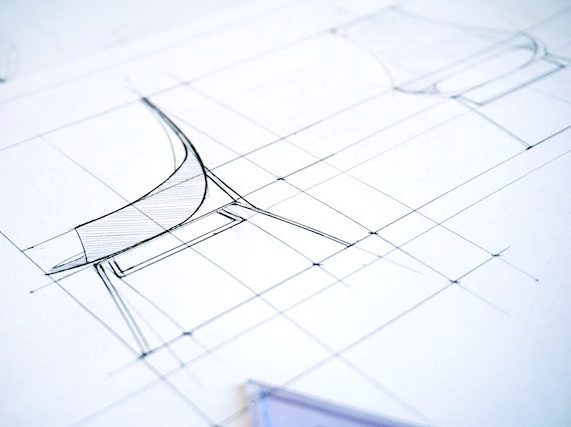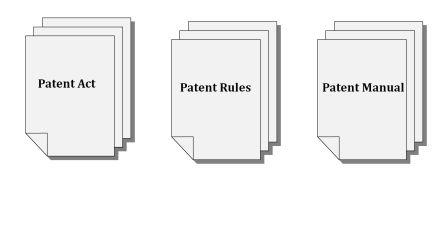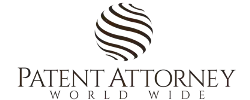Step 3: Patent drafting / writing
“Patent Drafting or Writing a patent application is the process of preparing a patent application that is capable of protecting the broadest possible scope of an invention, successfully going through the examination process till the grant of a patent, and capable of being commercialized. Hiring an experienced patent attorney ensures compliance with laws, strategic claim drafting, and proficient prosecution, maximizes protection, avoids design around, and enhances the invention’s commercial value.”
Table of Contents
- Step 3: Patent drafting / writing
- What is patent drafting or patent writing?
- Can I draft and file a patent application on my own? DIY patent
- Hiring an experienced patent attorney for patent drafting is important:
- Cost of patent drafting in Japan
- Writing patent application is a specialized skill
- How patent attorney write / draft a patent application
- Important things about claims
- Important things about drawings
- Writing patent specification
What is patent drafting or patent writing?
Patent drafting or patent writing is the process of preparing a patent application that is :
- capable of protecting the broadest possible scope of an invention,
- capable of successfully going through the examination process till the grant of a patent, and
- capable of being commercialized or enforced
A patent application describes and defines an invention, including its technical details, novelty, and potential applications and uses. Such patent application is submitted to the patent office and when the patent is granted, the patent has exclusive rights for a limited time.
Patent drafting is the stage where your invention disclosure and patentability search report would prove very helpful in writing a good patent application. Patent drafting/writing is a specialized job, it requires years of practice and experience with patent law to draft a good patent application. Writing a patent application is a complex job, there are many rules and care to be taken while drafting claims, writing detailed descriptions, writing different embodiments of the invention, describing inventive steps, etc
“A good patent application written by an experienced patent agent/attorney should adequately cover the scope of your invention and should survive not only through the examination phase till the grant of patent but also it should survive the commercialization phase where actual money is made by licensing or selling patent rights, where competitors should not be able to work around your patent.”
Can I draft and file a patent application on my own? DIY patent
Yes, you (an inventor) can draft a patent application, but there are several challenges and potential pitfalls associated with DIY patent drafting. Here are some things that can go wrong with do-it-yourself patent drafting:
- Inadequate Understanding of Patent Laws: Patent laws are complex and continuously evolving. there are many rules to writing a patent application, Without a thorough understanding of these laws, you may fail to produce the right information in the written format required by patent law such that your invention would get the broadest possible protection, fail to meet the necessary legal requirements, or include irrelevant details that could weaken the patent application. Patent drafting requires a combination of technical knowledge and legal expertise. It is crucial to accurately and precisely describe the invention, its novelty, and its technical aspects.
- Narrow or Inadequate Patent Claims: Patent claims define the scope of protection granted by the patent. Crafting well-drafted claims that cover the invention’s variations and potential applications requires experience and strategic thinking. An inventor may unintentionally limit the scope of protection or fail to include essential claim elements, leaving the invention vulnerable to infringement or design-around by competitors.
- Mistakes in Procedure: Patent offices have strict procedures and formalities that must be followed during the application process. Missing deadlines, using incorrect forms, or failing to comply with specific requirements can lead to rejection or delays. Without knowledge of these procedures, an inventor may inadvertently make critical mistakes that harm the chances of obtaining a patent.
- Inadequate Patent Search: Conducting a comprehensive prior art search is crucial to assess the novelty and non-obviousness of an invention. DIY inventors may not have access to specialized databases or the expertise to perform a thorough search. Failing to uncover relevant prior art can result in the filing of a patent application for an invention that lacks novelty, which may be rejected by the patent office.
- Limited Experience with Patent Prosecution: Patent prosecution involves responding to office actions, conducting interviews with patent examiners, and addressing any objections or rejections raised by the examiner. Without experience in this area, an inventor may struggle to navigate the prosecution process effectively, leading to prolonged examination periods or even abandonment of the application.
While it is possible for inventors to draft their own patent applications, these potential risks highlight the importance of seeking assistance from an experienced patent attorney. Their expertise can help navigate the complexities of patent law, increase the likelihood of a successful application, and maximize the protection and commercial value of the invention.
Hiring an experienced patent attorney for patent drafting is important:
Expertise and Knowledge: Patent attorneys have specialized knowledge of patent laws and regulations. They are familiar with the intricate requirements and formalities involved in drafting a patent application. They understand how to structure the claims, write a detailed description, and include the necessary technical and legal language to ensure the application meets the patent office’s standards.
Maximizing Patent Protection: A skilled patent attorney can help identify the unique aspects and innovative features of an invention. They can strategically draft the claims to maximize the scope of protection, ensuring that the patent covers not only the current embodiment but also potential variations and improvements. This can be crucial in preventing competitors from designing around the patent and infringing on the inventor’s rights.
Clear and Precise Language: Patent drafting requires clear and precise language to define the invention and its boundaries accurately. Ambiguous or vague language can lead to a narrow interpretation of the patent or potential challenges during patent examination or litigation. Experienced patent attorneys understand how to craft precise claims and descriptions that minimize ambiguity and increase the chances of a successful patent grant.
Patent Office Procedures: Patent offices have specific procedures and formalities that must be followed during the patent application process. A seasoned patent attorney is well-versed in these procedures and can ensure that all necessary documents, forms, and fees are submitted correctly and within the required deadlines. This helps prevent unnecessary delays or rejection of the application due to procedural errors.
Patent Strategy and Portfolio Management: A knowledgeable patent attorney can assist in developing an overall patent strategy aligned with the inventor’s business goals. They can provide advice on patentability, conduct prior art searches, analyze competitors’ patents, and help build a strong patent portfolio. This strategic approach can be essential for leveraging the value of the patents and protecting the inventor’s market position.
Cost of patent drafting in Japan
The cost for drafting a patent application in Japan varies in a great deal as it is dependent on multiple factors like field of invention and complexity and the cost is approximately 1,00,000 Japanese Yen (JPY).
Time required to draft a patent application in Japan : it takes about 1 to 2 weeks time for a patent attorney to draft an application for an invention. It certainly can take more time based on complexity, length of the detailed description, and availability of patent attorney’s time.
The outcome of patent drafting stage is :
- A patent application that can be filed at JPO
- A patent application that is well written by an experienced patent agent/attorney that survives through the examination phase, till the grant of patent and commercialization phase as well.
Writing patent application is a specialized skill
Let’s review the outcome expected from Patent protection. a patent should :
- Provide the broadest possible protection to our innovative ideas
- Competitors should not be able to copy or compete with our invention without our consent
- Competitors should not be able to work around our patented invention and build similar solutions without infringing on our patent (this is the most important point)
- we should be able to monetize the patented invention by
- by producing patented invention without competition
- by licensing it to other company to get royalty payments
- by completely selling the patent rights to other business
and get significant monetary benefits for your efforts
writing a patent application around the novel feature of the invention needs a very balanced and scientific approach that has to take into account the technical as well as the legal side.
Going too broad or too narrow protection while writing claims would be a mistake.
“Claims should not be too broad because those would be anticipated by existing prior arts, and the claims should not be too narrow because competitors would be easily able to design around our invention”
How patent attorney write / draft a patent application

You may be surprised to know, that patent drafting does not begin with the title of the invention or the abstract; In fact, most Patent attorneys/agents first draft claims !!!
Claims are the most important part of the patent application.
- Claims decide the boundaries of the protection that you would be getting for your invention
- Claims are used to enforce your patent
- Claims decide whether the competitor is infringing on your patent
- Claim are closely examined in the patent examination phase at JPO
- Claims are the most difficult part of patent application to write
Of course, there are other dependencies and rules for other parts of patent applications when deciding scope but it is the claim which stands most important thing that decides the future of your patent.
Important things about claims
The purpose of the claim is to define the invention protected by the patent.
The reason patent agent or attorney starts with writing claims first, because once we have a complete set of claims providing appropriate protection to the invention and which are approved by you (inventor), then writing remaining parts of the patent application like detailed description, abstract and summary becomes easier as these parts generally follow the boundaries set by claims.
How to review claims? written by patent agent or patent attorney ?
To be honest, a patent agent or attorney is the most appropriate person to write and review claims with you, however, there are some important things to consider :
- Since claims define the scope of legal protection, it is suggested that they should be drafted carefully to cover all the aspects of the protection being sought at the same time adequately distinguishing the prior art from the claimed invention.
- Unity of invention and clarity of claims
- a) Claim(s) of a Complete Specification shall relate to a single invention, or to a group of inventions linked so as to form a single inventive concept.
- b) Claims shall be clear and succinct and fairly based on the matter disclosed in the specification.
- Rules for writing preamble such that it should not be limiting the scope of the invention
- Rules about using appropriate transition like “comprising” “consisting of”
- What is not claimed in the claims stands disclaimed, and is open to public use, even if the matter is disclosed in the description.
- Each claim is evaluated on its own merit and, therefore, if one of the claims is objected, it does not mean that the rest of the claims are invalid.
- it is therefore important to make claims on all aspects of the invention to ensure that the applicant gets the widest possible protection.
And there are many rules and standard practices that a patent attorney or agent would be incorporating while writing claims for your patent application. In short,
“Claims should be written in such a way that they would not be invalidated in the litigation phase and they would not allow competitors to practice the invention without infringing on patented invention”
Important things about drawings

It is required to include the drawings which help in explaining the invention wherever it is appropriate to do so, if not done the patent application would be rejected or require submission of relevant drawings to describe the invention.
- the drawing plays a much more important role than just illustrating the invention to be patented.
- the drawings are also used to define the scope of the disclosure of the invention and claims of the invention.
- If in case your invention disclosure has not explicitly included some features of the invention but they are present in the drawings of your invention, then the drawings can be used as a basis to support the claim that talks about that particular feature. In other words, claims can find support in drawings even though it is not explicitly mentioned in the detailed description of the invention
hence it is important to consider drawing as a significant part of a patent application and it is required to handle it with care while writing the patent application.
Even though you do not want to go for professional drawings (which is recommended to do) you can submit hand-drawn sketches along with the patent application as long as those sketches are readable, can be comprehended, and related to the invention disclosure. such hand-drawn sketches are called informal drawings. but it is recommended to go for formal drawings as long as possible.
in general drawings include:
- Flowcharts
- Graphs
- Tables
- perspective view of the device
- front view
- top view
- side view of Elements
- the sectional views of elements
- illustrations of the invention in use
Writing patent specification
And Just like claims and drawings, there are many rules and standards for writing other parts of patent specification like:
- Title of the invention
- Referenes of application
- Abstract
- Background of the invention
- Brief summary of the invention
- Brief description of drawings
- Detailed description of invention
- Field of invention
- Include references to cite
- disclosing best mode
- covering all possible embodiments
and many more… below are the documents on the JPO website you can read to get additional details about patent drafting rules and standards.

JPO website under the patent act section
In summary, hiring an experienced patent attorney for patent drafting is crucial because they possess the necessary expertise, knowledge of patent laws, and drafting skills to maximize patent protection, navigate the complex patent application process, and ensure a clear and comprehensive application that stands the best chance of success.
next article Step 4: Filing patent application
